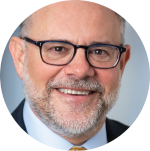
The rise of private markets is forcing European pension funds to rethink governance and scale. At the World Pensions Conference in London, experts pointed to Australia and Canada—pioneers in integrating illiquid assets—as models Europe can no longer ignore.
The gathering, organised as part of the World Pensions Council’s annual forum, brought together policymakers, asset owners and investment specialists to consider how long-term portfolios must evolve. The council positions itself as a global laboratory for pension innovation, pushing ideas that often later filter into mainstream practice.
One message dominated: as more value creation happens outside public markets, European funds risk falling behind unless they build the capabilities to invest in private equity, private credit and infrastructure.
Australia as reference point
 Few speakers carried more authority on this theme than Nick Sherry. A former Australian pensions and corporate law minister, Sherry helped shape the country’s modern superannuation system in the 2000s. He was closely involved in Australia’s 2010 Cooper Review, which accelerated consolidation, governance reform and the development of large industry funds able to compete globally.
Few speakers carried more authority on this theme than Nick Sherry. A former Australian pensions and corporate law minister, Sherry helped shape the country’s modern superannuation system in the 2000s. He was closely involved in Australia’s 2010 Cooper Review, which accelerated consolidation, governance reform and the development of large industry funds able to compete globally.
“Companies stay private for longer and longer. If pension funds cannot access them, they miss an ever-growing share of value creation.”
Nick Sherry, Team Super
Today he serves as co-chair of Team Super, a newly merged 22 billion dollar fund representing Australia’s transport, energy and mining workers. Sherry is also known internationally as a pension ambassador, advising governments and boards on long-term savings and investment policy.
“Companies stay private for longer and longer,” Sherry said. “If pension funds cannot access them, they miss an ever-growing share of value creation.”
According to Willis Towers Watson, global pension systems, worth some 58,500 billion dollars, have gradually shifted capital from listed markets to alternative assets over the past two decades. The firm’s long-term data shows a persistent rotation out of public equities and into private markets, driven by the search for diversification and long-horizon returns.
In Canada and Australia, allocations to private assets routinely exceed 20 percent. A survey by Aviva Investors found that global institutional investors (including European pension funds) allocate on average 11.1 percent of their portfolios to private markets.
Europe at a crossroads
Europe is now entering a similar phase. Several speakers noted that operational constraints, liquidity management and regulatory fragmentation still hold back adoption of private markets. But demographic pressures, the move toward defined contribution saving and the concentration of public markets into fewer megacap stocks all point in the same direction: long-term investors will need broader toolkits.
 Callum Stewart, head of investment proposition development at Standard Life, said DC schemes have “sufficiently long horizons” to include illiquid assets. In reality however, many platforms are not yet designed to handle capital calls, non-daily valuations or the fee structures common in private markets.
Callum Stewart, head of investment proposition development at Standard Life, said DC schemes have “sufficiently long horizons” to include illiquid assets. In reality however, many platforms are not yet designed to handle capital calls, non-daily valuations or the fee structures common in private markets.
Stephen Budge, partner for DC investment consulting at Lane Clark & Peacock, argued that the challenge in Europe is less about interest and more about execution. Many plans lack the scale or governance needed to assess private-market managers, negotiate terms or monitor cash flows. The situation, he said, is similar across Europe.
Integrated portfolios
A growing number of asset owners and consultants argue that private markets should be embedded within a whole-of-portfolio framework rather than treated as specialist allocations.
“Private markets can no longer be treated as a standalone pocket. They have to be integrated into a global portfolio strategy, with coherent management of cash flows and risks.”
Paul Forshaw, Future Growth Capital
 Paul Forshaw, chief executive of Future Growth Capital, a private markets consultancy, said private assets must sit within coherent multi-asset strategies to ensure that liquidity and risk are controlled, not outsourced to isolated sleeves. Several Dutch and Danish investors already operate such integrated models, supported by strong centralised governance.
Paul Forshaw, chief executive of Future Growth Capital, a private markets consultancy, said private assets must sit within coherent multi-asset strategies to ensure that liquidity and risk are controlled, not outsourced to isolated sleeves. Several Dutch and Danish investors already operate such integrated models, supported by strong centralised governance.
“Private markets can no longer be treated as a standalone pocket,” Forshaw said. “They have to be integrated into a global portfolio strategy, with coherent management of cash flows and risks.”
The cost debate
Fees remain a concern for many European plans. Eric Deram, managing partner and chief executive of Flexstone Partners, part of Natixis Investment Managers, said that while cost scrutiny is justified, it should not obscure the structural reality: the investable universe in public markets is shrinking as unlisted companies dominate more of the growth cycle.
James Lawrence, director of investment proposition at Smart Pension, put it bluntly: “The real risk for pension funds is not investing in private markets, but staying outside that part of the economy.”